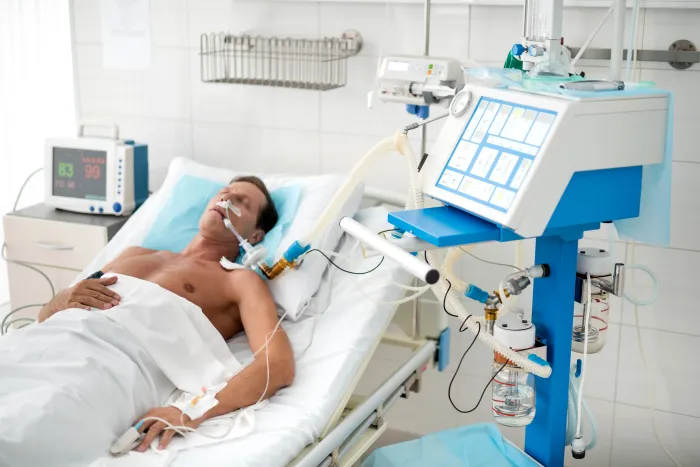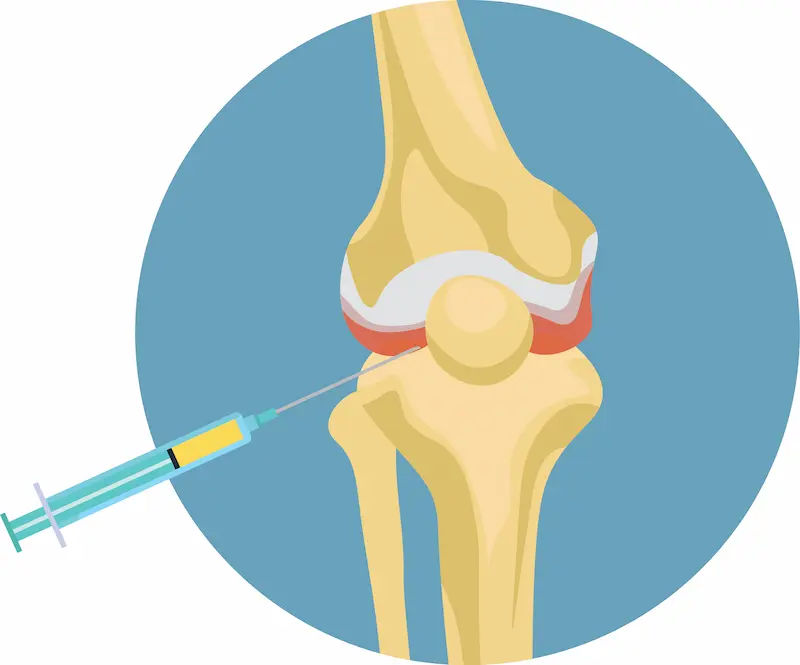The Critical Role of Ventilators in Breathing Support
Discover the critical role of ventilators in breathing support, how they work, when they are needed, and their importance in saving lives during critical care.

Written by Dr. J T Hema Pratima
Reviewed by Dr. Shaik Abdul Kalam MD (Physician)
Last updated on 12th Sep, 2025

Introduction
When our body's most automatic function, breathing, fails, it's a medical emergency. This is where ventilators, often called life support machines or breathing machines, play a literally vital role. A ventilator's primary purpose is to take over the work of breathing for a patient who is unable to breathe adequately on their own. This comprehensive guide will demystify the role of ventilators, moving beyond the dramatic portrayals seen on television to explain what they truly are, why they are indispensable in modern medicine, and what the experience entails for patients and their loved ones. We will explore the different types of ventilatory support, the conditions that necessitate their use, the associated risks, and the challenging journey of recovery. Understanding this critical piece of medical technology can provide clarity and comfort during some of healthcare's most stressful moments.
What is a Mechanical Ventilator? The Basics of Life Support
A mechanical ventilator is a sophisticated medical device designed to move breathable air into and out of the lungs. It doesn't pump pure oxygen but delivers a carefully controlled mix of air and oxygen. Think of it not as a cure, but as a form of life support that buys precious time for doctors to treat the underlying illness or injury causing the respiratory failure.
The Core Function: How a Ventilator Breathes for You
The machine performs two essential functions: oxygenation (adding oxygen to the blood) and ventilation (removing carbon dioxide from the blood). It does this by using pressure to deliver breaths. The ventilator can be set to control every breath for a patient (controlled ventilation) or to assist a patient who is trying to breathe but needs help (supported ventilation). The settings, including breath rate, volume, pressure, and oxygen percentage, are meticulously tailored by respiratory therapists and doctors to each patient's specific needs.
Key Components of a Ventilation Machine
While complex, a ventilator system consists of a few main parts: the main unit (which contains the compressor, controls, and monitors), a flexible breathing circuit (a set of tubes), and a delivery device (either a mask or a tube inserted into the airway). Alarms are a critical feature, alerting medical staff to any changes in the patient's condition or the machine's function.
Consult a Critical Care Specialist for the best advice
Why Are Ventilators Needed? Key Medical Indications
The need for a ventilator arises from a wide range of conditions where spontaneous breathing is insufficient to sustain life. The common thread is respiratory failure, which can be hypoxic (low oxygen) or hypercapnic (high carbon dioxide).
During and After Surgery
Patients under general anesthesia receive muscle relaxants that paralyse the body, including the diaphragm. A ventilator is used during the entire procedure to ensure they continue to breathe safely and receive adequate oxygen. Patients may also remain on the ventilator for a short period post-operation until the anesthesia wears off and they can breathe effectively on their own.
For Severe Lung Conditions and Infections
This is one of the most common reasons for ventilation. Conditions like severe pneumonia, Acute Respiratory Distress Syndrome (ARDS), a life-threatening lung injury often seen in severe infections like COVID-19, and chronic obstructive pulmonary disease (COPD) exacerbations can cause profound inflammation and fluid buildup in the lungs, making it impossible to oxygenate the blood. The ventilator allows the lungs to rest and heal while the treatments for the underlying condition work.
In Neurological and Muscular Disorders
Sometimes, the lungs are healthy, but the brain or nerves fail to send the signal to breathe. This can happen due to a brain stem stroke, a spinal cord injury, or diseases like Guillain-Barré syndrome or myasthenia gravis. In these cases, the role of ventilators is to support breathing until the neurological function can hopefully recover.
Types of Ventilatory Support: Invasive vs. Non-Invasive
Not all breathing support requires a tube down the throat. The method chosen depends on the severity and expected duration of the respiratory failure.
Non-Invasive Ventilation (NIV): Masks and Oxygen Therapy
NIV delivers pressurised air through a tightly fitting mask that seals over the nose or nose and mouth. The two main types are:
• CPAP (Continuous Positive Airway Pressure): Delivers a constant pressure to keep airways open, commonly used for sleep apnoea.
• BiPAP (Bilevel Positive Airway Pressure): Delivers two different pressures, a higher one when inhaling and a lower one when exhaling. It's often used for COPD exacerbations or heart failure to help with both oxygenation and ventilation without intubation.
Invasive Mechanical Ventilation: The Breathing Tube
This is what most people picture when they think of a ventilator. It involves inserting an endotracheal tube through the mouth (or less commonly, the nose) into the trachea (windpipe). For longer-term needs (typically more than one to two weeks), a surgeon may perform a tracheostomy, creating a surgical opening in the neck to place the tube directly into the trachea. This is more comfortable for the patient and makes the weaning process easier.
The Process: From Intubation to the ICU
The initiation of invasive ventilation is a carefully managed procedure in an intensive care unit (ICU).
What is Intubation and How is it Done?
Intubation is performed by a doctor, usually an anaesthesiologist or intensivist. The patient is typically sedated and given a muscle relaxant. Using a laryngoscope to visualise the vocal cords, the doctor guides the endotracheal tube into the trachea. The tube is then connected to the ventilator circuit. A cuff on the tube is inflated to seal the airway, preventing air leaks and aspiration.
The Role of Sedation and Paralytics
Being on a ventilator with a tube in one's throat is uncomfortable and can provoke anxiety and fighting against the machine. To ensure patient comfort and safety, medications are used. Sedatives keep the patient calm and sleepy, while analgesics (painkillers) manage discomfort. In specific situations, like severe ARDS, paralytic agents may be used temporarily to completely relax the respiratory muscles, allowing the ventilator to work with maximum efficiency and prevent further lung injury.
Potential Risks and Complications of Being on a Ventilator
While life-saving, mechanical ventilation is not without risks. The ICU team works diligently to prevent these complications.
Ventilator-Associated Pneumonia (VAP)
This is the most common significant infection. The breathing tube can allow bacteria to bypass the body's natural defenses and enter the lungs. Strict protocols, like elevating the head of the bed and meticulous oral care, are used to reduce the risk of VAP.
Lung Injury and Other Physical Risks
The pressure and volume from the ventilator can sometimes cause damage to the fragile lung tissues, known as ventilator-induced lung injury (VILI). There's also a risk of pneumothorax (a collapsed lung). Prolonged immobility can lead to muscle weakness, including the diaphragm, a condition called ventilator-induced diaphragmatic dysfunction (VIDD), which can complicate the weaning process.
The Road to Recovery: The Weaning Process
Weaning is the gradual process of reducing ventilator support as the patient's own ability to breathe returns. It is a milestone but can also be the most challenging part of the journey.
How Doctors Determine Readiness to Wean
The medical team assesses several factors daily: improvement in the original reason for intubation, adequate oxygenation on lower settings, stable vital signs, and the ability to initiate breaths. They perform spontaneous breathing trials (SBTs), where the ventilator support is significantly reduced to see how the patient tolerates breathing on their own for a short period.
What to Expect During the Weaning Process
Weaning is not always linear. Some patients are extubated (the tube is removed) after their first SBT. Others, especially those who were on for a long time, may struggle due to muscle weakness or lingering lung issues. They may require a tracheostomy and a slower, more gradual weaning process over days or weeks.
The Human Experience: Patient and Family Perspective
Beyond the machinery and medicine lies a deeply human experience.
Communication While on a Ventilator
With a tube passing through their vocal cords, a patient cannot speak. This is one of the most frustrating aspects. Patients and families can use alternative methods: lip-reading, writing, letter boards, or communication apps on a tablet. It requires immense patience from everyone involved.
The Emotional Impact on Families
Seeing a loved one sedated and connected to numerous machines is distressing. Families play a crucial role in providing comfort through touch, talking, and playing familiar music. They are also essential advocates, communicating with the healthcare team and providing information about the patient's preferences and baseline condition.
Conclusion
The ventilator stands as a pinnacle of modern critical care, a complex blend of technology and human expertise dedicated to one simple, ancient goal: sustaining the breath of life. Its role is fundamentally supportive, a bridge that carries patients through the most perilous phases of their illness towards recovery. Understanding how it works, why it's used, and what the journey entails can empower patients and families, transforming a frightening ICU presence into a recognised ally in the fight for health. While the path can be long and fraught with challenges, each setting adjusted and each spontaneous breath taken is a step forward. If you have specific concerns about a loved one requiring respiratory support, always consult directly with their intensive care team for personalised guidance.
b4a4e952-1f83-4bba-93af-102b1b4a5709
Consult a Critical Care Specialist for the best advice

Dr. Mainak Baksi
General Practitioner
13 Years • MBBS , MD (MPH)
Howrah
Mainak Baksi Clinic, Howrah
(50+ Patients)

Dr. Rajib Ghose
General Physician/ Internal Medicine Specialist
25 Years • MBBS
East Midnapore
VIVEKANANDA SEBA SADAN, East Midnapore

Dr Debnath Dwaipayan
Neurosurgeon
9 Years • MBBS, MS(Gen. Surgery), DrNB (Neurosurgery)
Delhi
Apollo Hospitals Indraprastha, Delhi

Dr. Puli Vanaja Reddy
Psychiatrist
15 Years • MBBS, MPH (USA), DCP (UK)
Hyderabad
Apollo Hospitals Jubilee Hills, Hyderabad
(200+ Patients)

Dr. Karuna Ratwani
Obstetrician and Gynaecologist
11 Years • MBBS, MS( Obstetrics & Gynaecology), F.MAS, FICRS Advanced Diploma in Minimal Access surgery Fellow of International College of Robotic Surgeons Diploma in Reproductive Medicine, Kiel-Germany Masters in Cosmetic Gynaecology , Greifswald-Germany Masterclass in Obstetrics & Gynaecology Ultrasound ( ISUOG, UK)
Delhi
Apollo Hospitals Indraprastha, Delhi
(25+ Patients)
Consult a Critical Care Specialist for the best advice

Dr. Mainak Baksi
General Practitioner
13 Years • MBBS , MD (MPH)
Howrah
Mainak Baksi Clinic, Howrah
(50+ Patients)

Dr. Rajib Ghose
General Physician/ Internal Medicine Specialist
25 Years • MBBS
East Midnapore
VIVEKANANDA SEBA SADAN, East Midnapore

Dr Debnath Dwaipayan
Neurosurgeon
9 Years • MBBS, MS(Gen. Surgery), DrNB (Neurosurgery)
Delhi
Apollo Hospitals Indraprastha, Delhi

Dr. Puli Vanaja Reddy
Psychiatrist
15 Years • MBBS, MPH (USA), DCP (UK)
Hyderabad
Apollo Hospitals Jubilee Hills, Hyderabad
(200+ Patients)

Dr. Karuna Ratwani
Obstetrician and Gynaecologist
11 Years • MBBS, MS( Obstetrics & Gynaecology), F.MAS, FICRS Advanced Diploma in Minimal Access surgery Fellow of International College of Robotic Surgeons Diploma in Reproductive Medicine, Kiel-Germany Masters in Cosmetic Gynaecology , Greifswald-Germany Masterclass in Obstetrics & Gynaecology Ultrasound ( ISUOG, UK)
Delhi
Apollo Hospitals Indraprastha, Delhi
(25+ Patients)
More articles from General Medical Consultation
Frequently Asked Questions
1. Can a patient hear you while on a ventilator?
Yes, hearing is often one of the last senses to fade. Even if they appear sedated, many patients can hear and recognise familiar voices. Talking to them calmly and reassuringly is encouraged.
2. Is being on a ventilator painful?
The procedure of intubation is done under sedation, so the patient doesn't feel it. While on the ventilator, the tube can cause discomfort, which is managed with continuous pain medication and sedatives to keep the patient comfortable.
3. What is the difference between a ventilator and an oxygen mask?
An oxygen mask only delivers a higher concentration of oxygen to a patient who is still breathing on their own. A ventilator is a machine that actively pumps air into the lungs for a patient who cannot breathe independently.
4. How long can a person be on a ventilator?
There is no fixed time limit. It can be for a few hours during surgery to several weeks or even months for complex cases. Long-term ventilation often involves a transition to a tracheostomy.
5. What happens if a patient cannot be weaned off the ventilator?
If a patient cannot breathe independently after extensive attempts to wean, discussions about long-term care options begin. This may involve transfer to a long-term acute care hospital (LTACH) or, in cases where recovery is not expected, a conversation about the goals of care and comfort measures.




